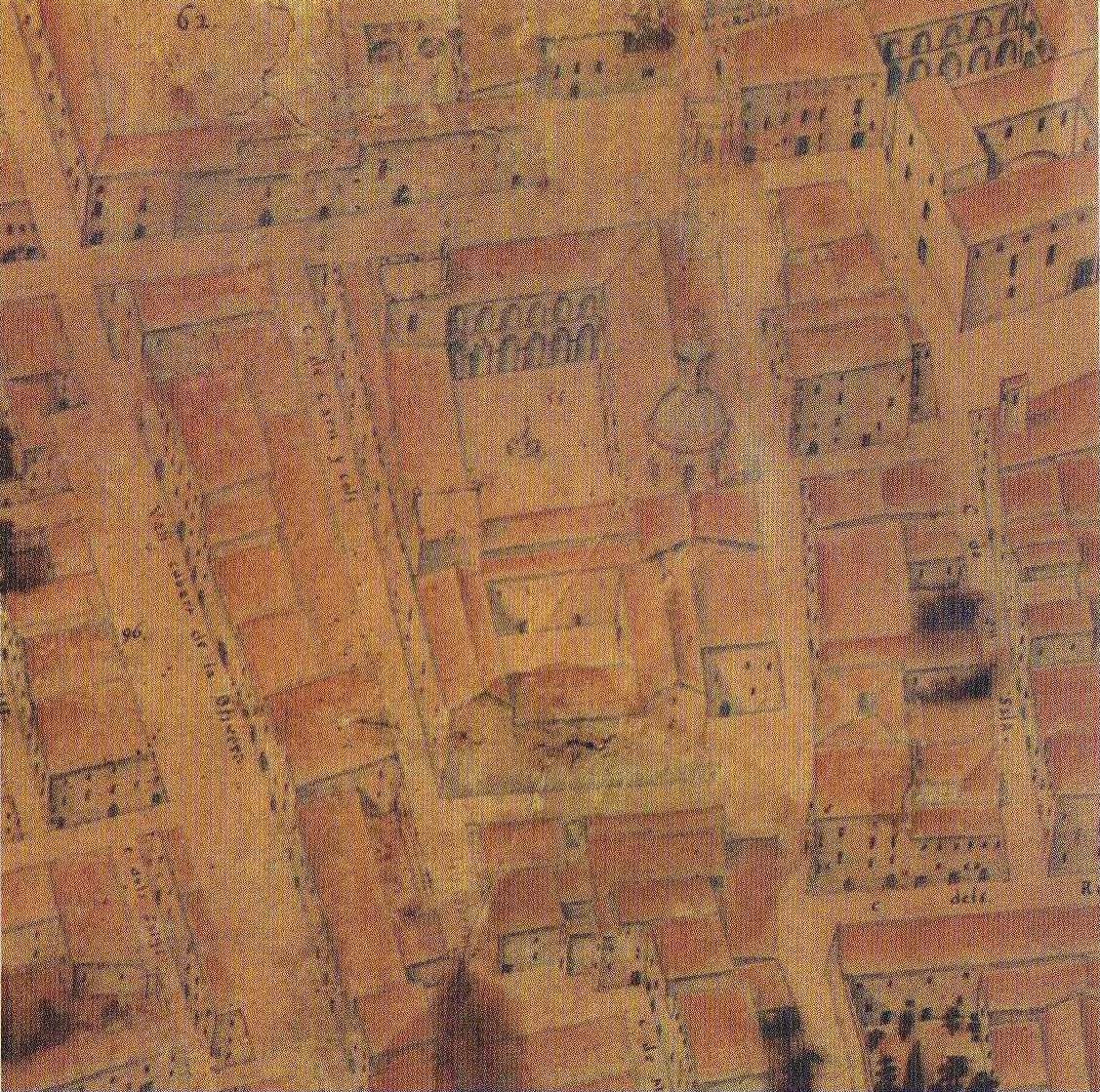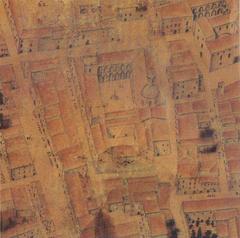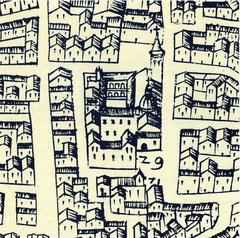
Reial Col·legi Seminari de Corpus Christi: Visiting Hours, Tickets, and Valencia Historical Sites Guide
Date: 14/06/2025
Introduction
Located in the heart of Valencia’s historic center, the Reial Col·legi Seminari de Corpus Christi—also known as the Colegio del Patriarca—is one of Spain’s most significant Renaissance monuments. Founded in 1583 by Archbishop San Juan de Ribera, this seminary was a cornerstone of the Counter-Reformation, designed to educate priests and uphold Catholic doctrine in the wake of the Council of Trent. Today, the college stands as a living testament to Valencia’s religious, artistic, and educational heritage, attracting visitors from around the world who seek to explore its rich history, architectural splendor, and spiritual significance (official Corpus Christi College website; Valencia Tourism Board).
Contents
- Historical Overview
- Architectural and Artistic Highlights
- Museum and Art Collections
- Visiting Hours, Tickets, and Guided Tours
- Accessibility and Visitor Tips
- Events and Special Visits
- Frequently Asked Questions (FAQ)
- Nearby Attractions
- Practical Information & Summary
- Sources and Further Reading
Historical Overview
Foundation and Development
The Reial Col·legi Seminari de Corpus Christi was established in 1583 by San Juan de Ribera, Archbishop of Valencia, as part of a broader Catholic reform movement. Its mission was to provide rigorous theological education, serving as a model seminary in post-Tridentine Spain (archivocorpuschristi.org). Construction began in 1586, and the college officially opened in 1610, with the Capilla (chapel) inaugurated in 1604 in the presence of King Philip III—evidence of strong royal support.
Role and Legacy
The college became a center for theological and humanistic studies, influencing Spanish ecclesiastical education for centuries. Its archives, now digitally accessible, reflect a meticulous record of daily life, library acquisitions, and the broader impact of its alumni (seminariocorpuschristi.org).
San Juan de Ribera’s vision and endowments continue to shape the institution’s identity, and his canonization underscores his enduring spiritual legacy (archivocorpuschristi.org).
Architectural and Artistic Highlights
Renaissance Masterpiece
The college is an outstanding example of Italian Renaissance architecture in Spain. The complex features a grand cloister—one of the most harmonious in Spain—organized around a double gallery of marble columns and adorned with vibrant Valencian ceramics (Fallas Valencia). The main façade, facing Calle de la Nau, is austere and crowned by a gallery of arches and the distinctive grilled choir window (Cultural Valencia).
The Chapel
The church, with a Latin cross plan and single nave, is richly decorated with frescoes by Bartolomé Matarana depicting the lives of the two Saint Vincents and scenes from 16th-century Valencia. The main altar is dominated by Francisco Ribalta’s monumental “Last Supper,” a Spanish Renaissance masterpiece (Valencia City Guide). The Communion Chapel features impressive Flemish tapestries.
Cloister and Unique Elements
The cloister’s double arcade and marble columns create a tranquil space for contemplation. The lower gallery walls are lined with traditional Valencian azulejos, while a renowned stone staircase in the northeast corner showcases local craftsmanship (Fallas Valencia). The taxidermied alligator in the left vestibule is a local curiosity, brought from the Americas (valencia.es).
Museum and Art Collections
Artistic Treasures
The Museo del Patriarca, inaugurated in 1954, houses an impressive collection of 16th- and 17th-century sacred art. Highlights include:
- El Greco: Paintings reflecting his unique spirituality
- Francisco Ribalta: The “Last Supper” altarpiece
- Joan de Joanes: Works bridging the Renaissance and Baroque
- Sariñena: Religious paintings of the Spanish Golden Age
- Flemish Tapestries: On display in the Communion Chapel
The museum also preserves manuscripts, liturgical objects, and rare texts, including a manuscript by Thomas More (Valencia City Guide).
Capilla de los Tapices (Chapel of the Tapestries)
This chapel is renowned for its Marian image, 17th-century frescoes by Tomás Hernández, and rare Brussels tapestries depicting virtues and vices (valenciabonita.es). Recent restoration has revealed hidden frescoes, adding to the chapel’s allure.
Visiting Hours, Tickets, and Guided Tours
Regular Visiting Hours
- Monday to Saturday: 10:00 AM – 6:00 PM
- Sunday and Public Holidays: 11:00 AM – 4:00 PM
Note: Guided tours are required for general visits, and the church is accessible to the public only during Mass (Patriarca Valencia).
Guided Tour Schedule
- Monday, Tuesday, Wednesday, Friday: 10:00, 11:00, 12:00, 13:00, 17:00, 18:00
- Thursday: 11:00, 12:00, 13:00, 17:00, 18:00
- Saturday: 10:00, 11:00, 12:00, 13:00
- Closed on Sundays
Duration: Approximately 55 minutes
Ticket Prices
- Premium Guided Tour (includes museum): €7
- Standard Guided Tour: €5
- Museum Only: €4
- Reduced rates are available for students and seniors.
Booking: Reserve tickets via [email protected] or phone +34 692 49 17 69. Online booking is recommended (valencia.es).
Tour Languages: English, French, Italian, German, Spanish, and Valencian.
Accessibility and Visitor Tips
- Accessibility: The building is partially accessible; visitors with mobility challenges should contact the visitor center in advance to ensure assistance.
- Photography: Permitted in most areas, but restrictions may apply in the chapel and museum, especially during services or when viewing sensitive artworks.
- Attire: Modest dress is recommended, especially during religious services.
- Arrival: Arrive at least 15 minutes before your tour.
- Climate: The thick stone walls offer cool interiors in summer; a light jacket is advisable in winter.
Events and Special Visits
- Feast of Saint Juan de Ribera (January 14)
- Octave of Corpus Christi (June)
- Veneration of Saint Mauro’s Relic (December)
Special liturgical events and temporary art exhibitions are held throughout the year, offering unique opportunities to experience the building’s living heritage (Seminario Corpus Christi).
Frequently Asked Questions (FAQ)
What are the visiting hours?
Monday to Saturday: 10:00 AM – 6:00 PM; Sunday and holidays: 11:00 AM – 4:00 PM.
Are guided tours available?
Yes, in multiple languages. Advance booking is highly recommended.
Can I visit the church outside of tours?
The church is open only during Mass, otherwise visits are by guided tour only.
How much do tickets cost?
Premium guided tour (with museum): €7; standard tour: €5; museum only: €4.
Is the site accessible?
Some areas have limited accessibility; contact staff for assistance.
Is photography allowed?
Yes, except during services and in some galleries.
Nearby Attractions
The seminary is centrally located on Calle de la Nau, opposite the old university and near the Valencia Cathedral, Central Market, and the historic La Nau building (valencia.es). The neighborhood offers abundant dining, shopping, and cultural venues—ideal for a full day of exploration.
Practical Information & Summary
Address: Calle de la Nau, 1, 46003 Valencia, Spain
Contact: [email protected] | +34 692 49 17 69
Official Information: Patriarca Valencia | Valencia City Guide
The Reial Col·legi Seminari de Corpus Christi remains an extraordinary cultural and spiritual landmark, embodying four centuries of religious education, Renaissance art and architecture, and living tradition. Plan ahead by consulting official resources for the latest visiting hours and ticketing information, and consider downloading the Audiala app for interactive guides and updates.
Sources and Further Reading
- Archivocorpuschristi.org
- Fallas Valencia
- Cultural Valencia
- Valencia.es
- Valencia City Guide
- Valenciabonita.es
- Lion Travel
- Patriarca Valencia
- Seminario Corpus Christi
- Visit Valencia Tourism Board












































